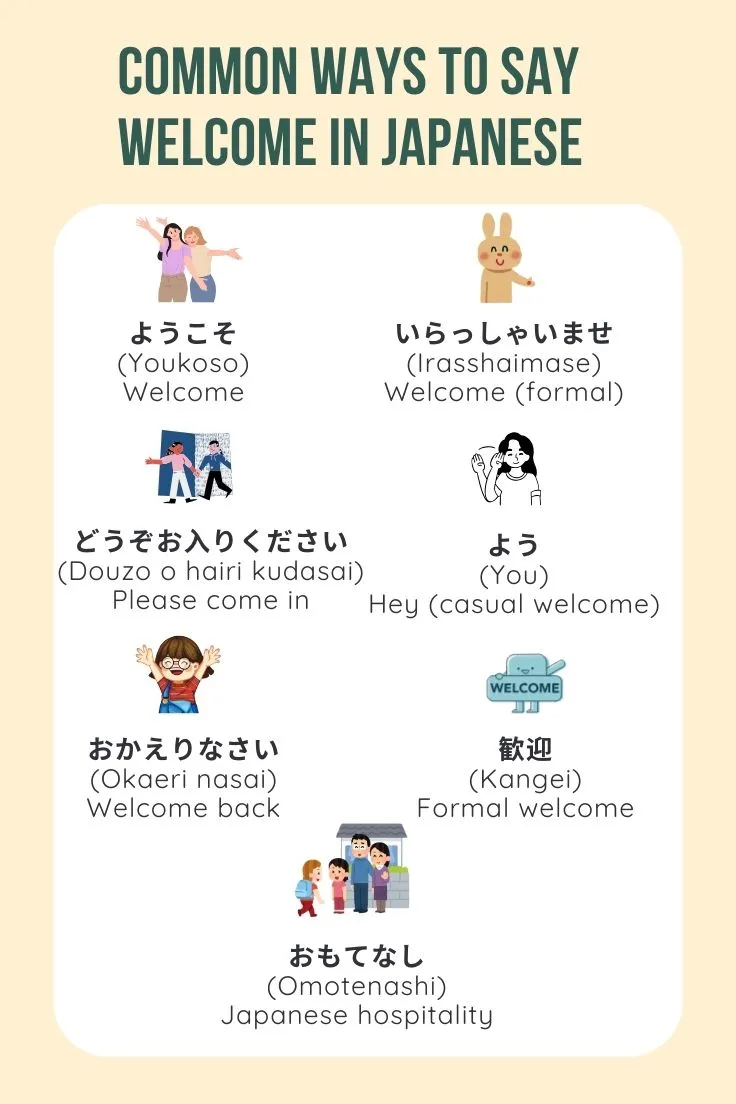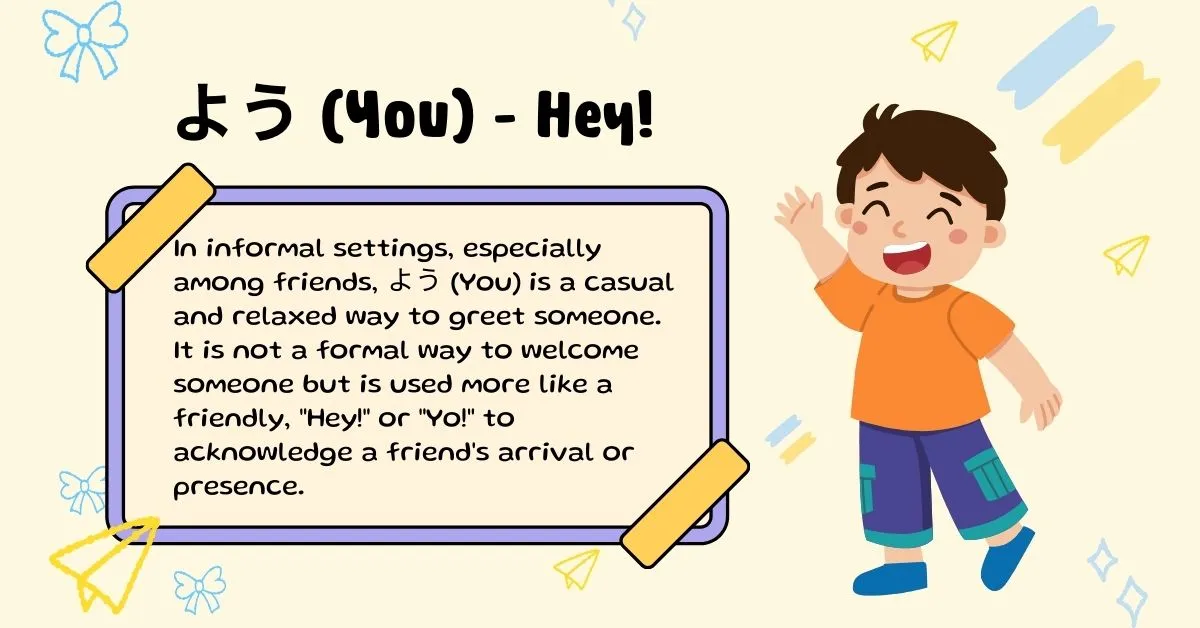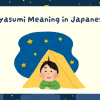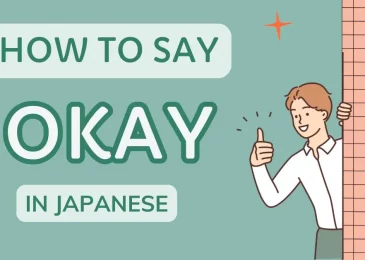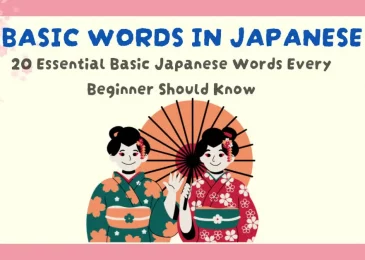- The most common word for “Welcome” in Japanese: ようこそ (Youkoso)
- Formal welcome: いらっしゃいませ (Irasshaimase)
- Warm and friendly welcome: どうぞお入りください (Douzo o hairi kudasai)
- Casual and friendly welcome among friends: よう (You)
- Welcoming someone back home: おかえりなさい (Okaeri nasai)
- Formal welcome in writing: 歓迎 (Kangei)
- Expressing personal hospitality: おもてなし (Omotenashi)
- Practical tips for using “Welcome” in Japanese
- Recommended Japanese resources and tools
- Conclusion
If you’re traveling to Japan or interacting with Japanese speakers, knowing how to say “welcome” in Japanese can significantly improve your communication and demonstrate respect for the local culture. Japanese greetings are deeply ingrained in the country’s social fabric, and learning the correct way to welcome others can help foster positive relationships. In this guide, we’ll explore the different ways to say “welcome” in Japanese, their meanings, proper usage, and when to use each one in different situations.
The most common word for “Welcome” in Japanese: ようこそ (Youkoso)
ようこそ (Youkoso) is one of the most common and general ways to say “welcome” in Japanese. It is used to greet people who are arriving at a place, such as a home, an event, or even a city. The term conveys a warm invitation and a sense of hospitality.
Usage: This expression is often used in both formal and informal contexts, but it is especially popular in signs or phrases welcoming visitors to places like tourist attractions, cities, or events. It is not typically used in daily interactions at home or in businesses, as there are more specific phrases for those situations.
Examples:
- 東京へようこそ (Toukyou e youkoso)
→ Welcome to Tokyo!
This phrase is commonly seen at airports, train stations, or on promotional materials for tourists arriving in Tokyo.
- 私たちの家へようこそ (Watashitachi no ie e youkoso)
→ Welcome to our home!
Used when inviting guests to your home. It is a warm and friendly greeting that helps guests feel at ease.
Formal welcome: いらっしゃいませ (Irasshaimase)
The phrase いらっしゃいませ (Irasshaimase) is primarily used in commercial settings. It is a polite, formal greeting used by staff in stores, restaurants, and other businesses to welcome customers or guests. The phrase is also used by employees when you enter a place of business, indicating that you are being welcomed as a valued customer.
Usage: Use this greeting in customer service contexts and doesn’t require a direct response from the person being greeted. It’s an expression of respect and professionalism, signaling that the customer is welcome to shop or dine.
Examples:
- いらっしゃいませ!(Irasshaimase!)
→ Welcome!
This is the standard greeting you’ll hear when entering most shops, restaurants, and other service establishments in Japan. The staff says it to make customers feel welcome and valued.
- レストランにいらっしゃいませ (Resutoran ni irasshaimase)
→ Welcome to the restaurant!
A polite, formal greeting used when entering a restaurant or similar establishment.
Warm and friendly welcome: どうぞお入りください (Douzo o hairi kudasai)
When you invite someone into your home or a personal space, どうぞお入りください (Douzo o hairi kudasai) is an ideal phrase to use. It is a polite and hospitable expression that conveys warmth and an invitation to come in and make yourself comfortable.
Usage: Typically use when welcoming guests to your house or when you’re hosting an event. It can be said before or after someone knocks or rings the doorbell, inviting them to enter.
Examples:
- どうぞお入りください、くつろいでください (Douzo o hairi kudasai, kutsuroide kudasai)
→ Please come in and make yourself comfortable!
This is a welcoming phrase that shows consideration for the guest’s comfort and invites them to relax in your home.
- こちらへどうぞお入りください (Kochira e douzo o hairi kudasai)
→ Please come in here!
This is a specific invitation to enter a particular room or area, often used when showing guests to a seat or a particular part of your home.
Casual and friendly welcome among friends: よう (You)
In informal settings, especially among friends, よう (You) is a casual and relaxed way to greet someone. It is not a formal way to welcome someone but using it more like a friendly, “Hey!” or “Yo!” to acknowledge a friend’s arrival or presence.
Usage: You will よう (You) in relaxed, friendly contexts and should be reserved for people you know well, such as close friends or peers. It is very informal and should not be used in professional or unfamiliar settings.
Examples:
- よう、元気だった? (You, genki datta?)
→ Hey, how have you been?
This is a casual, friendly way to greet someone who you haven’t seen in a while.
- よう、久しぶり!(You, hisashiburi!)
→ Hey, long time no see!
Using this expression when meeting a friend after a long absence.
Welcoming someone back home: おかえりなさい (Okaeri nasai)
The phrase おかえりなさい (Okaeri nasai) is used to greet someone who is returning to a familiar place, especially when they come back home after being away. Family members or close friends commonly uses it to convey a sense of relief and joy upon their return.
Usage: Typically said to a person when they return home after a day out, a trip, or even after work. It is a warm and familiar greeting that signifies affection and care.
Examples:
- おかえりなさい!(Okaeri nasai!)
→ Welcome back!
This is the standard greeting used to welcome someone back home.
- おかえりなさい、よく頑張ったね (Okaeri nasai, yoku ganbatta ne)
→ Welcome back, you did great!
A welcoming phrase often used by family members when someone has accomplished something important, like finishing work or a long journey.
Formal welcome in writing: 歓迎 (Kangei)
歓迎 (Kangei) is typically used in written contexts, such as invitations or announcements. It is a formal expression for more official settings like conferences, ceremonies, and other events where people are welcomed in a group setting.
Usage: This phrase doesn’t use in everyday speech. It’s found in written invitations, public signs, and formal announcements to convey respect and appreciation for the guest’s presence.
Examples:
- 会議に歓迎します (Kaigi ni kangei shimasu)
→ Welcome to the conference!
Used in a formal setting like a conference or seminar when addressing an audience.
- 歓迎会にお越しいただき、ありがとうございます (Kangeikai ni okoshi itadaki, arigatou gozaimasu)
→ Thank you for coming to the welcome party!
This would be used in a formal written context to express gratitude to the guests attending a welcoming event or party.
Welcome – Expressing personal hospitality: おもてなし (Omotenashi)
The word おもてなし (Omotenashi) refers to the traditional Japanese concept of hospitality. It is not just about greeting someone, but also about anticipating their needs and making them feel genuinely cared for. It is the art of offering sincere, selfless hospitality that goes beyond the typical welcoming phrases.
Usage: Omotenashi is reflected in every aspect of Japanese hospitality, from the way you greet a guest to the thoughtful gestures of service and care throughout their visit. It’s an essential cultural concept that ensures guests feel valued and comfortable.
Examples:
- おもてなしの心を大切にしています (Omotenashi no kokoro o taisetsu ni shiteimasu)
→ We value the spirit of hospitality.
Using it in businesses or settings where guests are being welcomed with great care.
- おもてなしのサービスを提供します (Omotenashi no saabisu o teikyou shimasu)
→ We offer hospitality service.
Used in hotels, restaurants, or traditional tea ceremonies where the focus is on providing exceptional service and creating a memorable experience for guests.
Practical tips for using “Welcome” in Japanese
When learning to use the various ways of saying “welcome” in Japanese, it’s important to understand not only the meanings of the phrases but also how to use them effectively in real-life situations. The Japanese language places a strong emphasis on respect, formality, and understanding of social context, so using the right greeting can make a big difference in how you are perceived. Here are some practical tips to help you navigate these phrases confidently and appropriately:
1. Match the context: Be mindful of the setting
In Japanese culture, the context of a conversation plays a crucial role in selecting the appropriate greeting. Using the wrong level of formality can be seen as disrespectful, or just awkward, especially in more formal or business-related situations.
In business or commercial settings:
いらっしゃいませ (Irasshaimase) is the most commonly used phrase in retail stores, restaurants, and other service-oriented businesses. It’s a formal greeting and is part of the customer service culture in Japan. Employees use this phrase every time a customer enters, but it is not used in personal, informal situations.
Example: When you enter a store, you will likely hear いらっしゃいませ! from the staff. This phrase is not meant to be replied to; it’s more of an acknowledgment of your presence.
In casual or social situations:
おかえりなさい (Okaerinasai) is a warm and familiar greeting reserved for home or casual environments. It’s used when someone returns after being away, such as a family member or close friend returning from work or a trip. It’s a phrase that conveys care and affection, typically used by close loved ones.
Example: When a family member comes home, you might greet them with おかえりなさい! (Welcome home!).
For general or neutral situations:
ようこそ (Youkoso) is a great all-purpose greeting. It’s used when you want to warmly welcome someone to a place, such as a new city, your home, or an event. This phrase is more neutral than others, and it doesn’t carry the business-specific or intimate connotations of some other phrases.
Example: When someone arrives at your house or at a party, you might say ようこそ! as a friendly, non-formal way to make them feel welcome.
2. Practice pronunciation: Pay attention to tone and formality
Japanese pronunciation and tone are key aspects of effective communication, especially when using greetings. There are subtle differences in pronunciation, and even a slight variation in tone can change the meaning or level of respect conveyed by a phrase. In addition, Japanese relies heavily on honorifics and formality to establish social hierarchies, so being mindful of these aspects can help ensure that you communicate correctly.
Pronunciation tips:
- For いらっしゃいませ (Irasshaimase), the pronunciation should be clear, with an emphasis on the “ma” sound in the middle. The “se” at the end should be soft, almost like “seh.”
- For ようこそ (Youkoso), the pronunciation of “yo” is soft and almost like “yo-oo,” and “ko” should be pronounced gently but distinctly.
- Practice saying おかえりなさい (Okaerinasai) with the right emphasis on the “ri” sound, making sure it’s not too harsh but clear and welcoming.
3. Understand cultural nuances: Japanese greetings and etiquette
Japanese greetings often carry cultural significance and reflect deeply rooted social customs. The act of greeting someone in Japan is not just about words—it’s also about showing respect and understanding of social etiquette. Here are a few cultural nuances to consider:
Respect and hierarchy:
The Japanese language reflects the country’s strong sense of hierarchy and respect. This is reflected in the formality of the greetings used. For example, いらっしゃいませ (Irasshaimase) is used to show respect for customers or guests, while よう (You) is used between close peers who are of equal social standing.
The importance of hospitality:
The concept of おもてなし (Omotenashi), or Japanese hospitality, is central to the culture. It’s more than just a greeting—it’s an overall attitude of providing excellent service and anticipating the needs of guests. This extends beyond verbal greetings and includes actions like bowing, offering tea, and making guests feel welcome in every way possible.
Example: When welcoming someone into your home, offering them a comfortable seat, food, or a drink is a reflection of おもてなし (Omotenashi), and the greeting どうぞお入りください (Douzo o hairi kudasai) adds to the warmth of the welcome.
Recommended Japanese resources and tools
To master these expressions and deepen your understanding of Japanese language and culture, consider using tools like MochiKanji. This app provides a comprehensive vocabulary course that includes essential expressions like “welcome.” It reinforces learning through interactive flashcards, which help you retain and recall new words effectively. Additionally, MochiKanji offers kanji writing practice and conversational exercises to solidify your knowledge and improve your language skills.
Conclusion
Knowing how to say “welcome” in Japanese and understanding the cultural context behind each expression can help you engage with the language more meaningfully. From the formal いらっしゃいませ (Irasshaimase) used in business settings, to the warm and personal おかえりなさい (Okaeri nasai) when greeting someone returning home, Japanese offers a rich variety of ways to make someone feel truly welcome. The next time you find yourself in Japan, whether entering a store, visiting a friend’s house, or enjoying a traditional meal, you’ll now know the perfect way to say “welcome” in Japanese.

